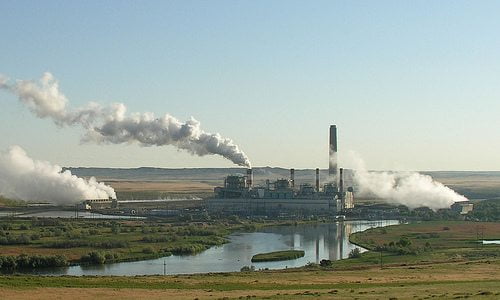

Environment
Greenhouse gas at record high – 141% increase on pre-industrial levels
The amount of greenhouse gases in the atmosphere reached a new high in 2012, according to new data. The increase continues the accelerating trend that is driving climate change.
The World Meteorological Organisation (WMO) found that between 1990 and 2012, there was a 32% increase in radiative forcing – the warming effect on our climate. Carbon dioxide and other heat-trapping, long-lived gases, including methane and nitro oxide, cause the effect.
Michel Jarraud, WMO secretary-general, said, “The observations from WMO’s extensive Global Atmosphere Watch network highlight yet again how heat-trapping gases from human activities have upset the natural balance of our atmosphere and are a major contribution to climate change.”
He pointed to the recent Intergovernmental Panel on Climate Change (IPCC) report to demonstrate what would happen if emissions are not curbed. The report said global temperatures could exceed 2C warming by the end of the century.
Warming of more than 2C will have a serious impact on the environment and substantially increase the risk of extreme weather.
Jarraud added, “Limiting climate change will require large and sustained reductions of greenhouse gas emissions. We need to act now, otherwise we will jeopardise the future of our children, grandchildren and many future generations. Time is not on our side.”
Carbon dioxide is the most common greenhouse gas in the atmosphere and accounted for 80% of the increase seen in 2012. The amount of CO2 in the atmosphere reached 393.1 parts per million (ppm) in 2012, a 141% increase of the pre-industrial level. The increase was also above the 10-year average, marking an accelerated pace.
The concentration of CO2 in the atmosphere passed the 400ppm milestone in May this year – the first time in around three million years it had been at such levels.
Atmospheric methane has increase 260% since the Industrial Revolution and since 2007 has begun to rise again after a period of cooling off.
Speaking about the 2012 statistics, Seb Beloe of WHEB Asset Management said, “It is another data point that underlines our direction of travel that has been clear for some time. It should serve to encourage policy makers to sharpen their pencils and get back to work on crafting policy measures that decelerate the rate of growth in carbon emissions and other greenhouse gases.
“It’s interesting to see that methane emissions are rising rapidly. Might this be due to fracking? It looks like it’s too early to tell.”
A report released last week said fracking poses a ‘low’ health risk. However, sustainable investors have remained wary.
Peter Michaelis, head of the SRI team at Alliance Trust Investments, pointed out that the report assumed that fracking operations would be properly run and regulated but the track record in the US is “far from perfect”
Further reading:
Rising carbon dioxide will amplify El Nine, say scientists
IPCC climate report: global temperatures likely to exceed 2C this century
Half of 2012 extreme weather events linked to climate change, says study


 Environment10 months ago
Environment10 months agoAre Polymer Banknotes: an Eco-Friendly Trend or a Groundswell?

 Environment11 months ago
Environment11 months agoEco-Friendly Home Improvements: Top 7 Upgrades for 2025

 Features9 months ago
Features9 months agoEco-Friendly Cryptocurrencies: Sustainable Investment Choices

 Features10 months ago
Features10 months agoEco-Friendly Crypto Traders Must Find the Right Exchange




























